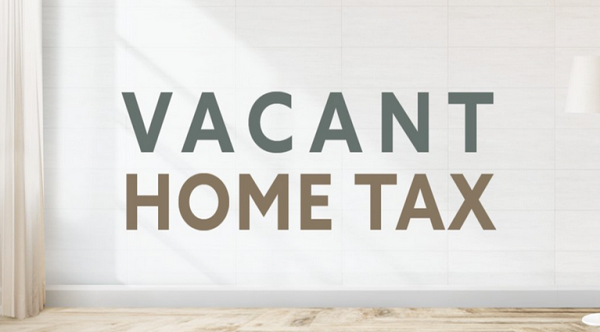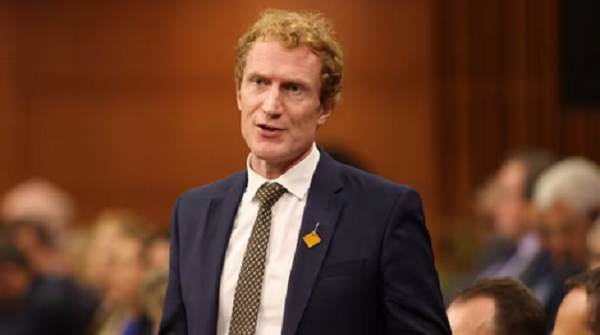Here’s what you should know about Toronto revamped vacant home tax
Starting Friday, property owners will have six months to once again declare to city hall whether their residences were vacant or not this year, or be sent a potentially hefty bill next spring.
After this year’s messy rollout of Toronto’s vacant home tax, which saw many people mistakenly billed, the city launched a $2.6-million revamp aimed at making it easier for homeowners to declare their home’s occupancy status in this third year.
Here’s what you need to know about the city’s vacant home tax 2.0.
What is the vacant home tax?
It’s an annual tax on homes that are not used as principal residences by owners or their tenants for six months or more in a year — with some exceptions (see below).
City council voted in 2021 to impose the tax as a way to push homeowners, particularly investors living elsewhere, to either sell or rent their properties if they’re unoccupied during a housing crisis.
The tax took effect in 2022 and every year owners must self-report their home’s occupancy status to the city — even if they live there. Otherwise, the home will be automatically declared vacant and a bill that’s three per cent of the home’s assessed value will be sent to the owner.
When council first voted on this tax, the rate was one per cent. In fall 2023, council voted to triple the rate.
When, where and how often do I declare my home’s status?
Every year, like your income tax. The city’s online portal opens on Nov. 1 and closes the following April 30 from now on. This new deadline was chosen to align it with the Canada Revenue Agency’s income tax filing deadline.
There are several ways owners can declare their property’s status:
- through the portal;
- by phone through 311 (which has support in more than 180 languages) or at 416-392-CITY (2489) if they’re outside of Toronto;
- in person at tax and utility counters at city hall;
- in-person at special drop-in sessions at civic centres, councillors’ events, through community groups and condos;
- or in hard-copy form if it’s requested at a city hall or civic centre counter.
If an owner has multiple properties, each one needs its own separate declaration submitted to the city.
What other important dates should I know?
The city plans to mail out vacant home tax bills on June 1 (previously April). If that date falls on a weekend, as it does in 2025, bills will go out the next business day.
Once billed, homeowners must pay the tax in three equal instalments by Sept. 15, Oct. 15 and Nov. 17, otherwise an interest charge of 1.25 per cent will accumulate every month.
While the city’s website suggests owners go through MyToronto Pay to ensure payments reach it on or before these dates, council’s audit committee voted recently to scrap that system on June 2, 2025 following a damning auditor’s report. A new system has not yet been announced, but owners can always pay through online banking or phone banking, by cheque or pay in person at city hall or a civic centre.
The deadline to submit a complaint (billed in error, request an exemption) is Dec. 31.
What exemptions are there?
There are eight exemptions, which require proof. Owners won’t have to pay the tax if their property was vacant for six months or more:
- If the owner died within the two previous tax years. This exemption may be claimed for up to three consecutive tax years.
- If the property is undergoing repairs or renovations that prevent its “normal use,” has all the necessary permits and if the city believes is “without unnecessary delay.”
- If the principal resident is in a hospital, long-term or supportive care facility. This exemption may be claimed for up to two consecutive tax years.
- If the property’s ownership was fully transferred and the closing date was in the tax year being declared.
- If the property is needed for full-time employment by the owner or their spouse, where the job requires their physical presence in Toronto, the owner has a principal residence outside of the GTA and the employment term was “an aggregate” of at least six months.
- If there is a court order that doesn’t allow the property to be occupied.
- If the developer of a newly constructed residential unit is also the owner and the property was not occupied since it was constructed at the end of the last business day of the year nor was the unit put up for sale.
- If the property is used as a secondary residence by the owner, their spouse or a dependent for medical reasons while the owner has a principal residence outside of the GTA. The homeowner and their physician must fill out a vacant home tax medical treatment certificate form.
What if I get billed incorrectly?
Homeowners billed incorrectly can submit a complaint. If they disagree with the outcome, they can appeal it within 90 days.
What else is different this year?
The city is also launching what it calls a new “user-friendly” portal where you can now log in using either the 21-digit roll number or your home address, along with the customer number. There will also now be a progress tracker.
Owners declaring through the online portal can receive an email confirmation. If you don’t give an email address, you can now print or save the confirmation page, which includes a confirmation number.
This year, the city is waiving the usual late fee of $21.24 for missing the declaration deadline. It may reinstate the late fee in the future.
As a new mitigation measure, the city says it’s now able to monitor the number of people submitting their declarations on a weekly basis. If the declaration rate falls short of what the city expects, it could be a signal that something has gone wrong with the process, and the chief financial officer can delay sending out the tax bills until the problem is fixed.
This article was first reported by The Star













